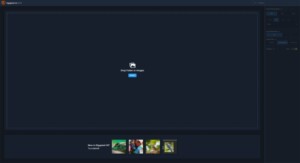
Select the scale factor you want to try (using either the Scale, Width or Height buttons and options).Ĭrop the image if necessary using the Crop button. What I tend to do is use as many of the automatic settings as possible and only play around with the manual sliders if I’m really not happy with the results.ĭrag the first image into the main window.
Gigapixel AI has a simple interface, and it’s very easy to use. “Art: Works best for digital cartoons, screenshots from animated movies and video games, and digital scans of paintings and drawings.” Best for old family photos, images downloaded from the internet, and photos taken on old cameras.” “Compressed: For images that have a lot of noise. This AI model is best for cityscapes, and even typographical imagery.”

“Architectural: For images with a lot of clear, crisp edges. This uses the standard Gigapixel AI model, trained on thousands of images.” Height: box for Max Height in pixels, inches or centimetresįour different algorithms to choose from: Width: box for Max Width in pixels, inches or centimetres Scale: 0.5x, 2x, 4x, 6x and …x (ie custom) Three Resize Modes (Scale, Width and Height) Regular software updates to improve performance

With its ability to suppress noise and reduce blur, the program allows you to resize your images better than any other product on the market, including Lightroom or Photoshop, and it also has a variety of other features similar to those in Sharpen AI and DeNoise AI: Gigapixel AI is the ‘ugly duckling’ of the Topaz Labs suite of software programs, but it can be just as useful as Sharpen AI and DeNoise AI if you need to enlarge an image, say for printing.


 0 kommentar(er)
0 kommentar(er)
